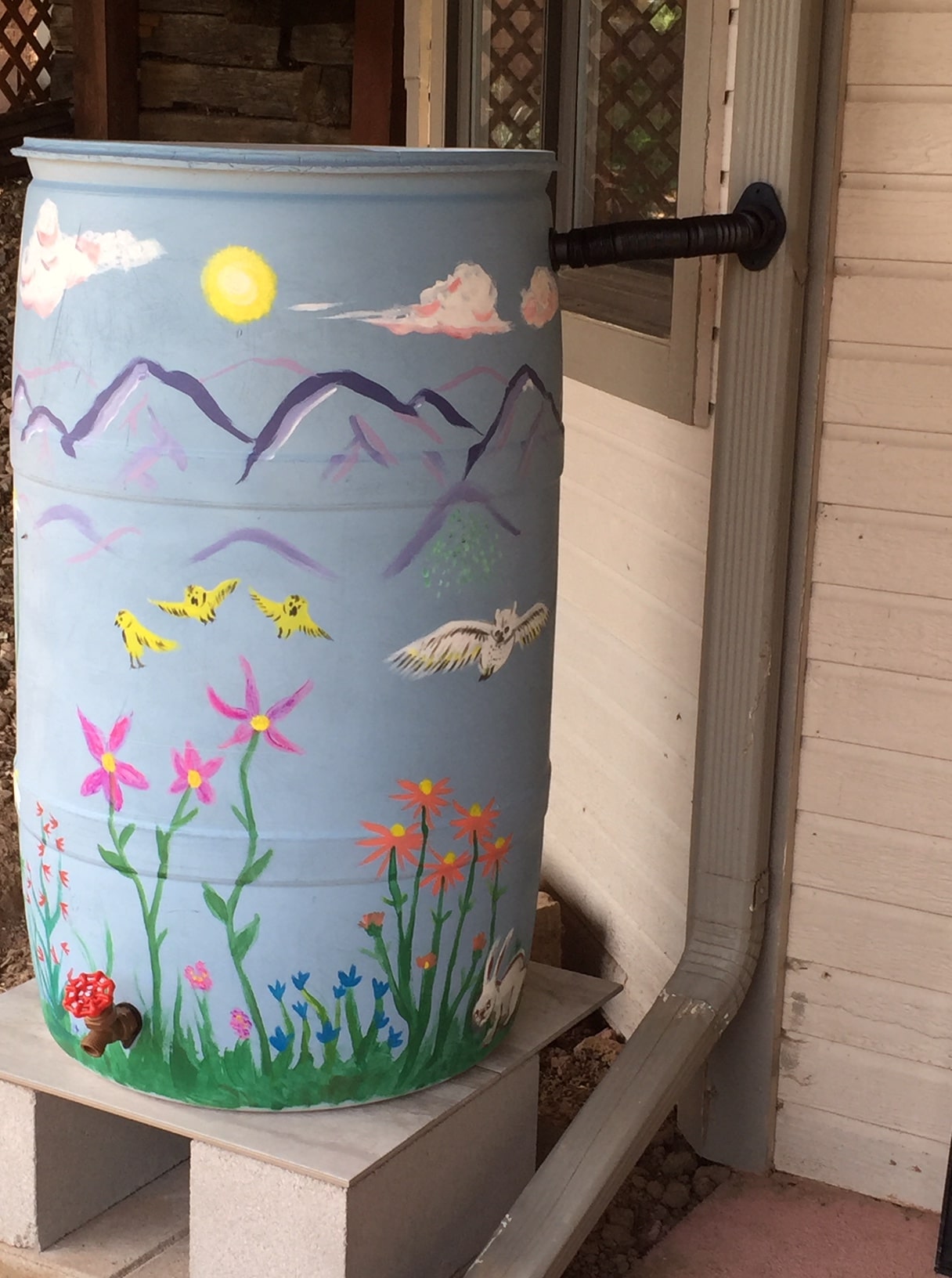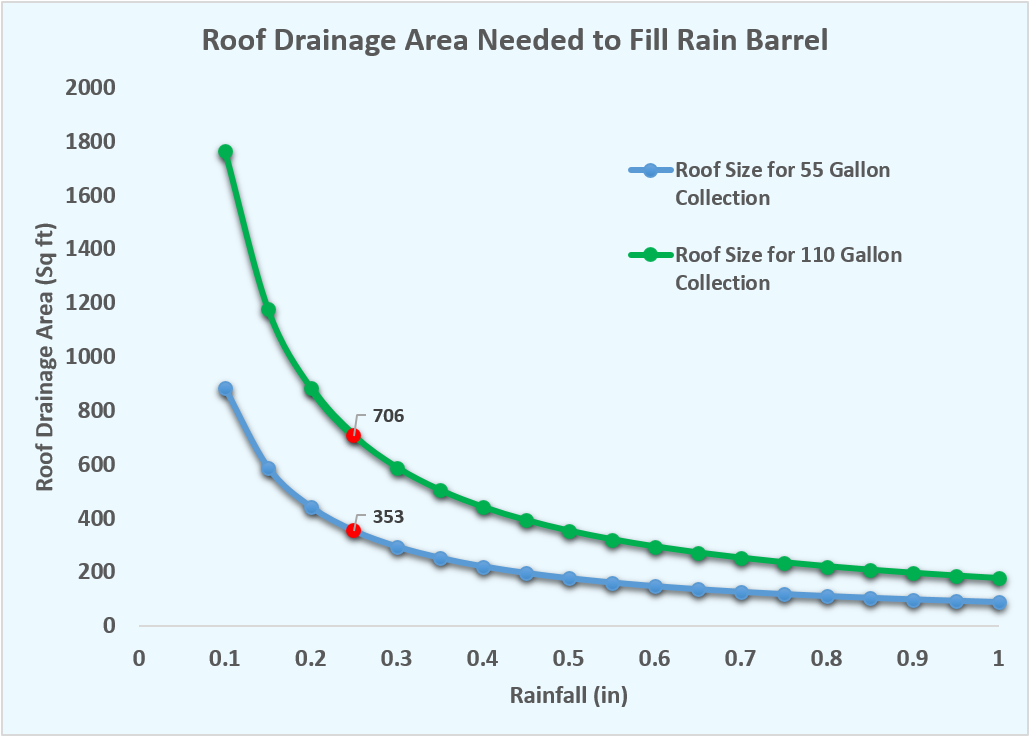Installation

This section describes the differences between prefabricated and “Do-It-Yourself” (DIY) rain barrel systems. Here you will find more information to help locate the optimal location for the rain barrel and determine how much rainwater could be collected by your rain barrel system.
Below we describe several options for the obtaining the system components, and include links to video tutorials on demonstrating the process to set up your own rain barrel. This section should help determine if a DIY or prefabricated rain barrel will work best for your situation.
Installing a Rain Barrel

1. Calculate Contributing Roof Area
You may be surprised to learn just how much water is available on your property. Several methods can be used to calculate the potential amount of rainwater you may be able to harvest
Here is an easy formula to remember: 1″ of Rain on 1,000 sf Roof will Yield 623 Gallons
- Roof Area (ft2) X Precipitation Amount (in) X 0.623 = Amount Collected (gallons)
2. Site Selection
Rainwater harvesting systems help reduce reliance on treated water to irrigate outdoor landscapong and help reduce water expenses. Rain barrels can be helpful during times of drought and in regions with water restriction times. The first step in successfully installing a rain harvesting system is to select an appropriate location for your barrel.
- Rain barrel location should be in an area that is close to where the water will be used.
- The rain barrel will need to be near a downspout.
- The contributing roof area to the selected downspout should be calculated to know the amount of rainwater that could be collected.
- The site selection could be different based on watering methods (hose or bucket/pail).
3. Components
The primary components of a rain water harvesting system include:

Video Tutorials